With the festival of Dasara (or Navratri) just over last week, households like ours have been carefully packing away our statues and dolls till next year.
While the Bengalis in Mumbai are immersed in Durga Puja and the Gujaratis in Garba and Dandiya, the South Indians get busy with Bommai Kolu, a festive dolls display that is the focal point of the 10-day long festival. Kolu (or Golu) is a tradition that is passed on, from one generation to the next. No matter which city in the world they move to, the Kolu moves with them. Most of those who set up a Kolu would have been doing so all their lives. My mother-in-law, at 87, is still very enthusiastic and plans the whole event with me.
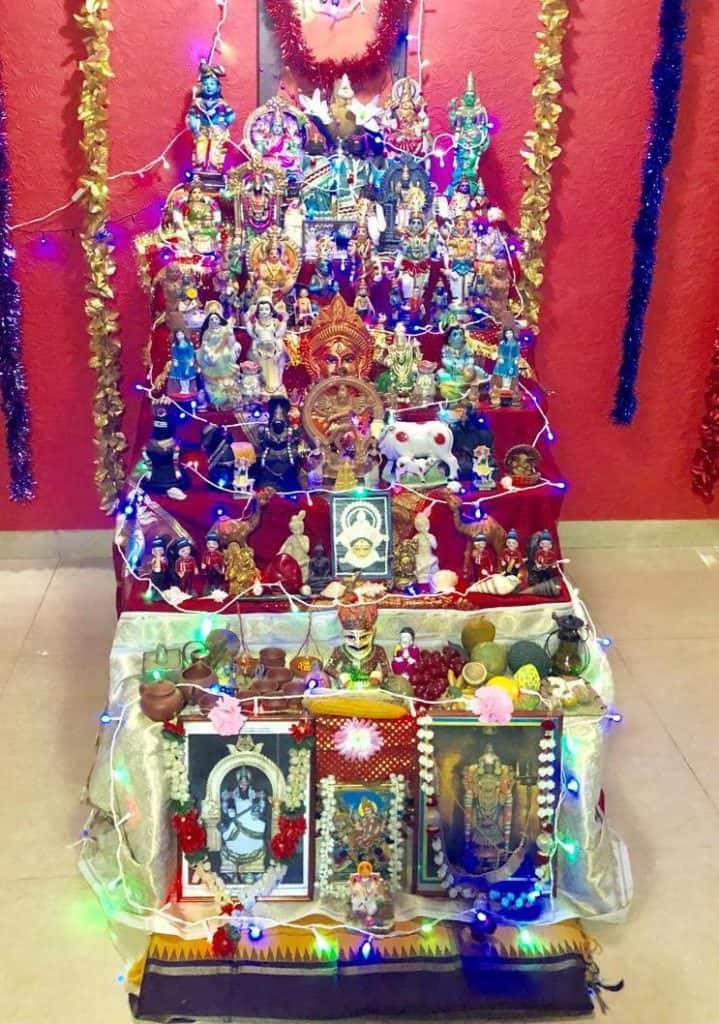
Kolu is set up on a tiered rack, with odd number of steps (3, 5, 7, 9 or 11). Households that have a ready staircase to spare for this could use it, but most of us have it packed away and we start assembling on the first day of the festival. We usually cover it with a nice fabric and then start arranging the dolls. The floor area around the main Kolu is also used.
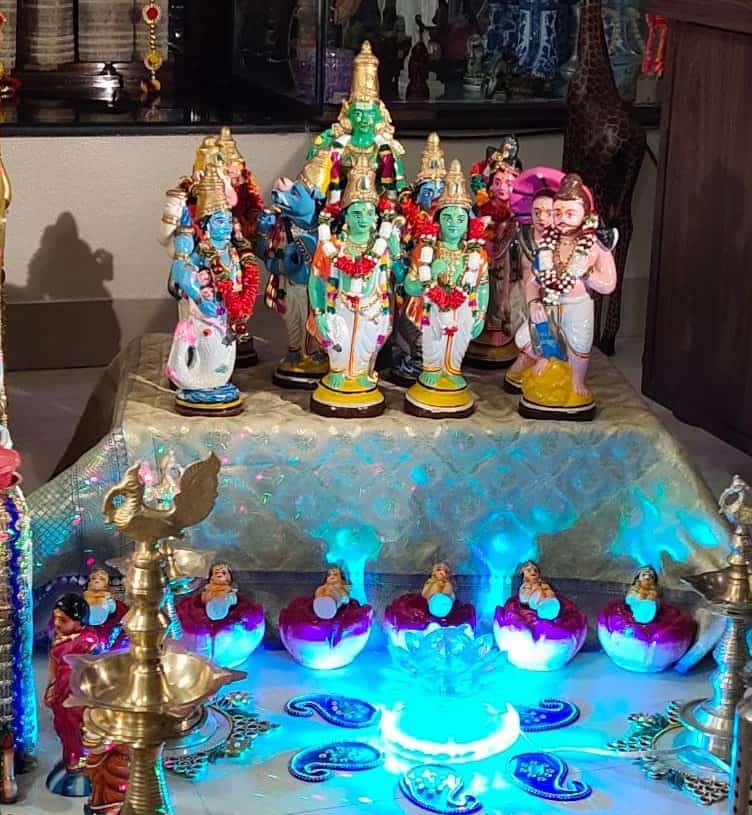
A lot of thought and care goes into arranging the statues and dolls, by size, theme and other parameters. Gods and Goddesses made of clay, colourfully painted, make the display a pretty sight. Every year, new statues are added, and this is a way of giving business to the potters who make them. It’s a tradition to ensure that there is a bride-groom pair in the Kolu, and this would generally be the wooden dolls that the lady of the house brought with her from her parental home.
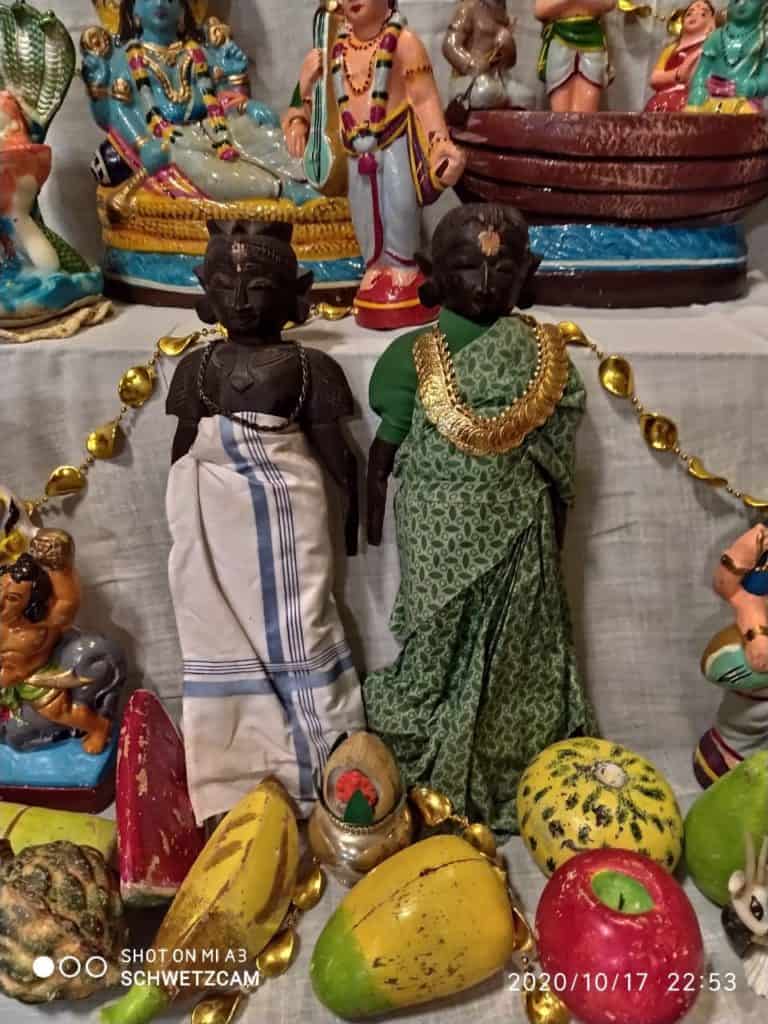
Kolu is not restricted to religious deities. One can display any dolls, even pictures. Children love to put their dolls and toys on the Kolu, even if it means not having them to play with for ten full days! I know people who specially collect dolls from every place they visit, to put on their Kolu.
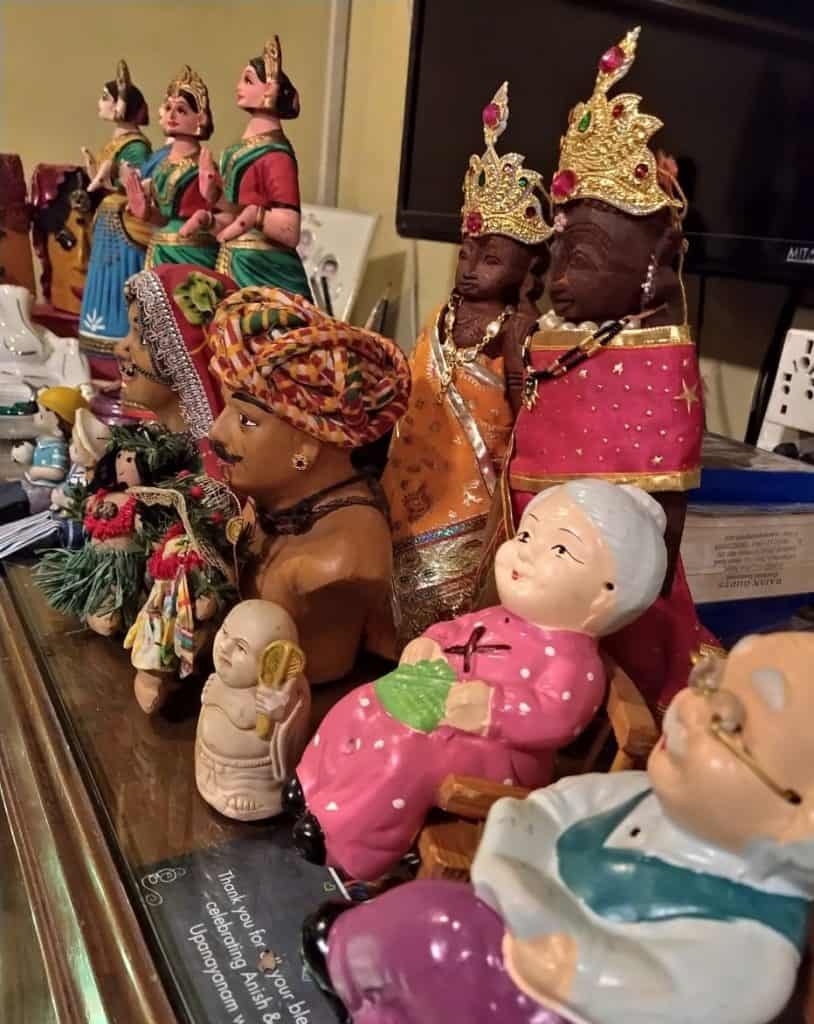
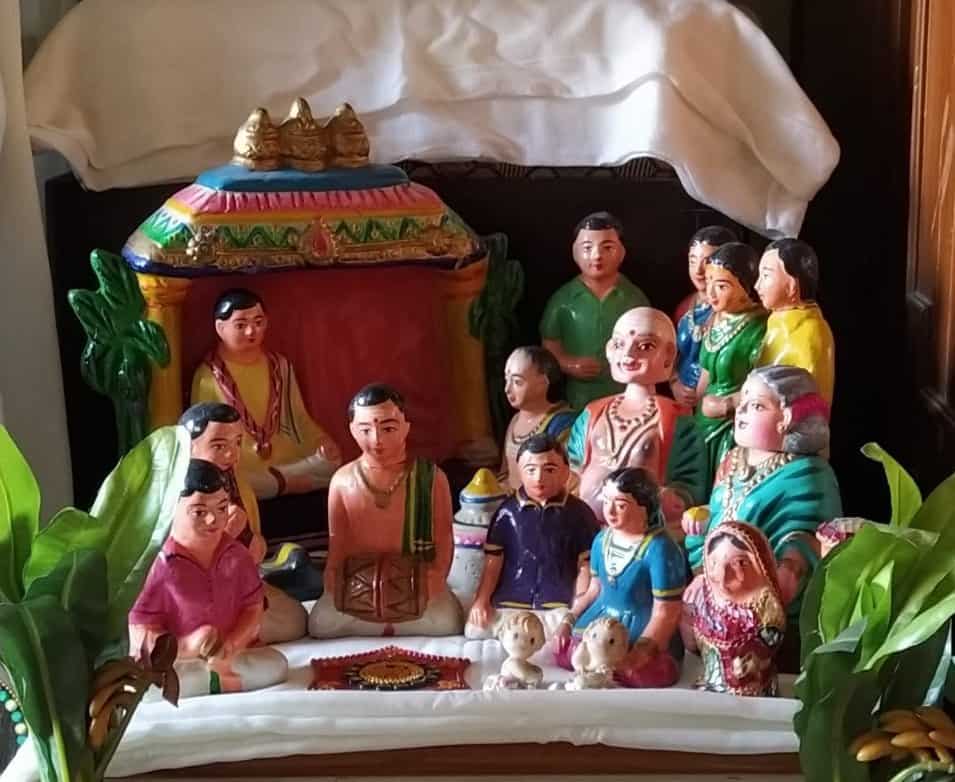
In the evenings, rituals (aarti pujas) are performed and prayers offered. Ladies of the neighbourhood are invited to see the Kolu and take the blessings of the Gods. Often, there are sessions with singing of bhajans and a lot of socialising. Food is cooked and offered to the Gods and to the guests too. On the evening of the tenth day, Vijayadashami, when good triumphs over evil, one of the dolls is put to sleep, symbolising the end of the Kolu.
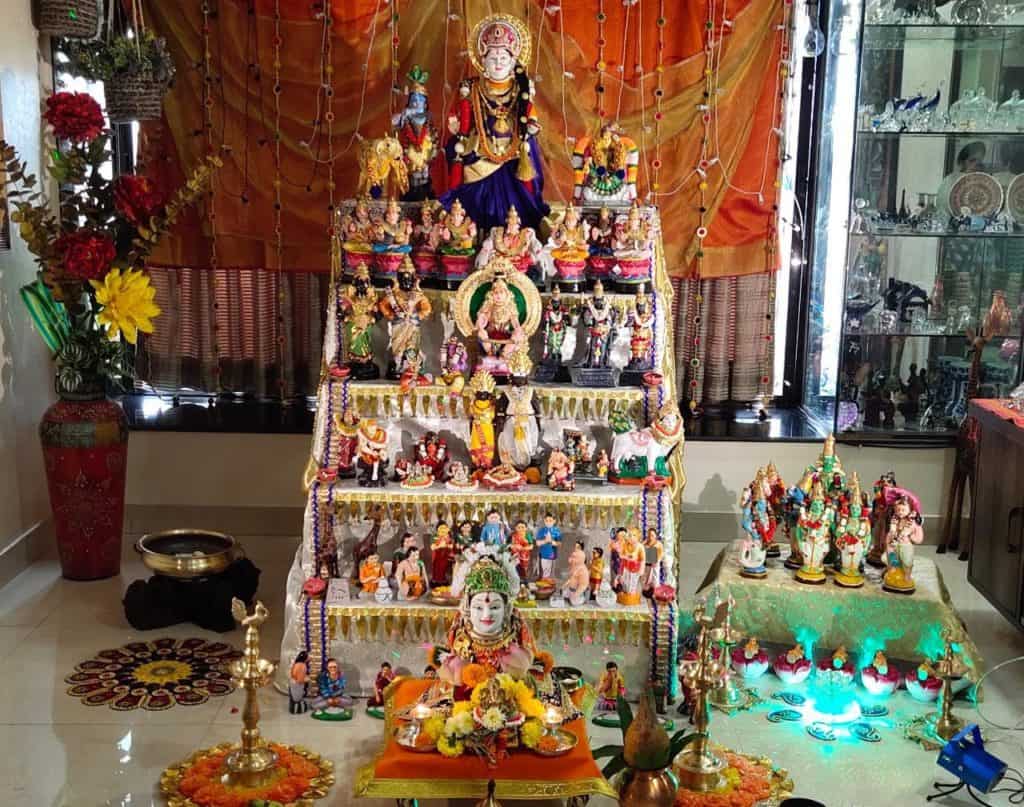
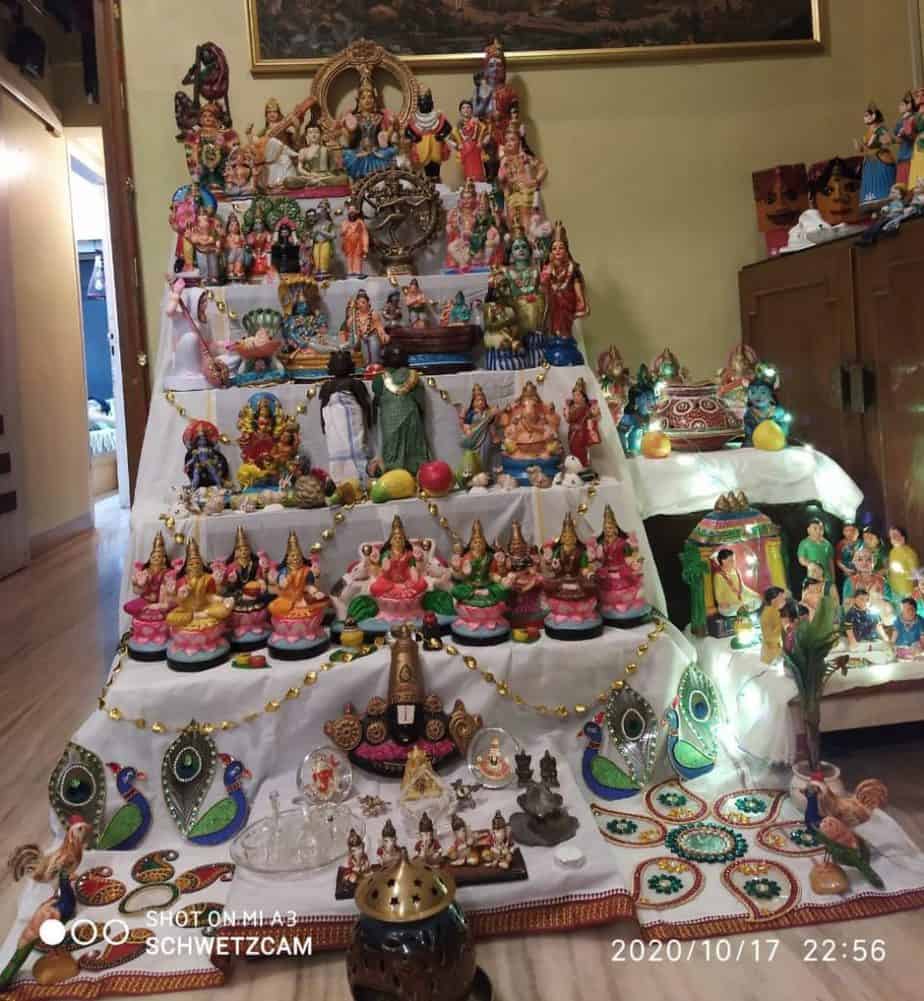
Covid-19 has been a dampener on festivals, with no socialising and no big celebrations. Despite this, many of us still set up our usual Kolus, while some did it in a smaller way. As we wrap the statues in newspaper and store them away in our boxes, we can’t wait for next year, with hope that we will be closer to normal then.
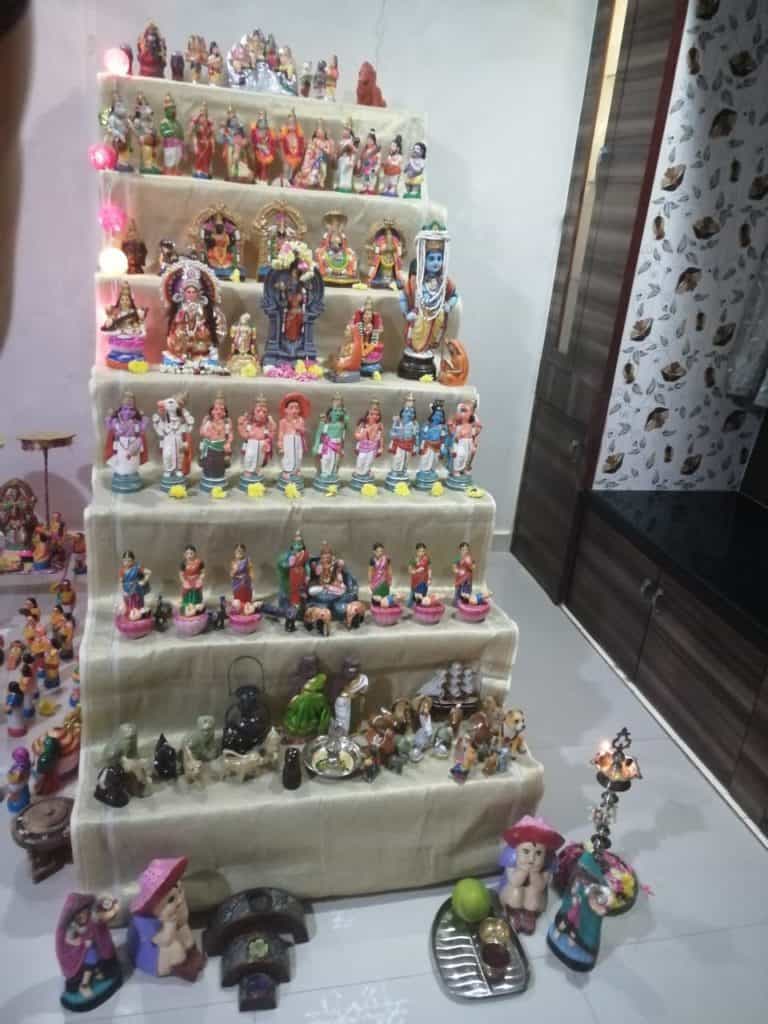
Also read:
Navratri Garba and Dandiya
Durga Pujo – the digital way
Well written article. Congrats